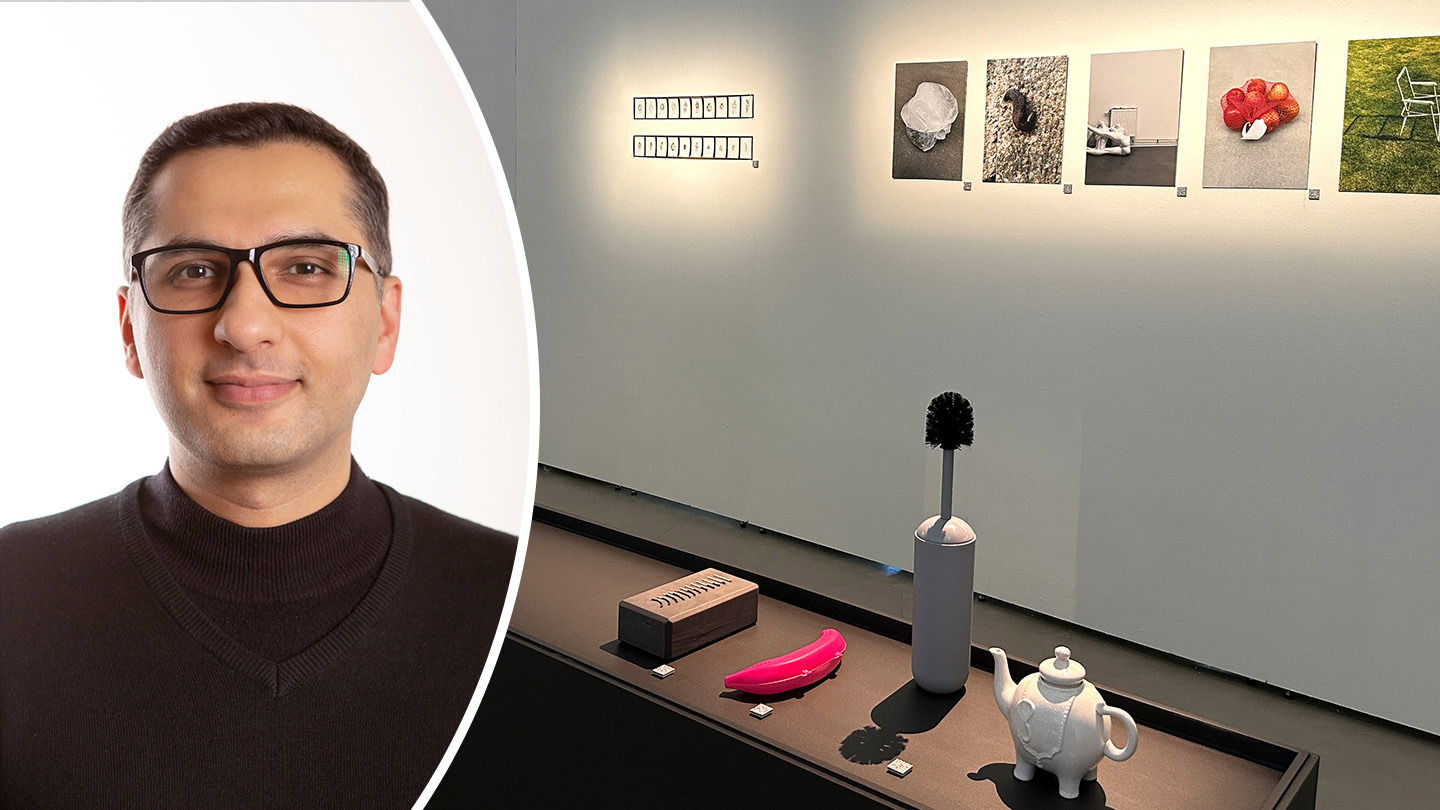A new doctoral thesis examines alternative perspectives on the body in fashion design
2024-04-11
Text + Film

The doctoral thesis, titled “Body and Design: Alternative Ontologies in Body-Based Design Processes”, presents a series of concepts that have emerged through exploratory experiments, exhibitions, and workshops.
“It provides readers with tools and methods for alternative ways of working and navigating through the design process,' explained Faseeh Saleem a recent PhD graduate in Textiles and Fashion from the Swedish School of Textiles, University of Borås.
At the outset of his research studies, he was more interested in movements in the human body and how these movements influence the visual expression of a garment. However, during his studies, he became more curious about alternative ways of thinking about what could constitute a body in the context of fashion design.
“What happens to the textile if it's draped around a tree or a chair? Can water be a body? Or why not an ice cream? And how can one combine these thoughts with the latest technology and the newest machinery?”
The combination of art and design creates dialogue
The PhD studies were organized into four main sections based on questions and experiments about what a body could be. Based on this, Faseeh Saleem arranged exhibitions of the artistic outputs form the subject specialists and workshops involving both fashion and textile design students.
“An exhibition at the Textile Museum attracted attention in the local press. They focused on a piece with a banana. My supervisor thought, 'it's not about bananas,' but for me, it didn't matter if it helped someone become better at observing their surroundings.”
The dissertation also presents tools and methods that enrich and offer alternatives to traditional methods in fashion design processes. These tools and methods represent alternative approaches and promote the development of artistic perspectives in design practice.
Faseeh Saleem argues that it is novel for many in the world, especially outside Europe, to combine art and design.
“This, in itself, leads to an interesting dialogue,” he concluded.
A note of great significance
The workspace Faseeh Saleem took over when starting his PhD studies at the Swedish School of Textiles was empty except for a note on the wall. It said: 'think simple.'
“It turned out that Professor Lars Hallnäs, who had previously occupied the workspace, had left the note there. It became very meaningful to me; it's very difficult to think simply, and therefore, it's important to be reminded of it. So, I also left it behind when packing up my things from the room. Perhaps it can also help the next person who will work there,” he explained.
He said that the environment at the Swedish School of Textiles and the people he works with have meant a lot to him.
“My supervisor, Professor Clemens Thornquist, has a particular way of teaching. He taught me to be confident in my own decisions.”
Engage in the research
Faseeh Saleem believes that one of his main results is the methods in the dissertation that demonstrate a possibility to highlight artistic flexibility in design.
“The dissertation also presents interpretations of the body that can aid us in improving how we design. Furthermore, this can be used in the education of new designers.”
However, he does not see the dissertation as a conclusion or the end of the work but rather an ongoing project. He also invites the public to contribute with their perspective of what a body can be, follow the link to participate. Participate in Faseeh's research.
Read more
Anna Kjellsson
Faseeh Saleem

